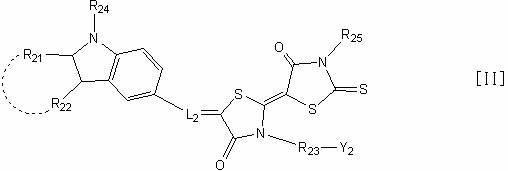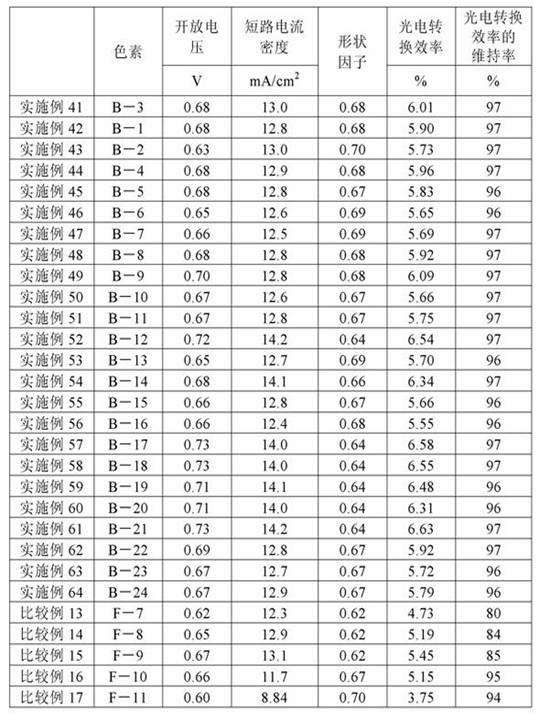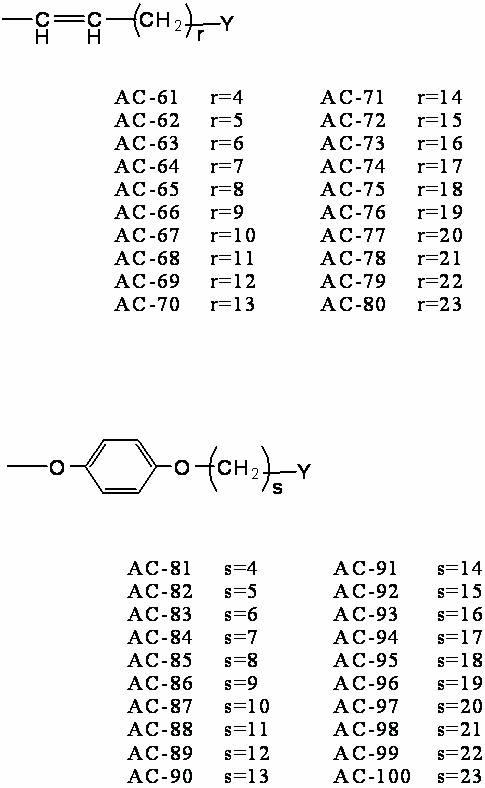Dye for dye-sensitized solar cell, semiconductor electrode, and dye-sensitized solar cell
A solar cell and pigment sensitization technology, applied in solar cells, semiconductor devices, electrolytic capacitors, etc., can solve the problems of complex synthesis of pigment intermediates, achieve high photoelectric conversion efficiency, prevent reverse electron transfer reactions, and reduce negative effects Effect
- Summary
- Abstract
- Description
- Claims
- Application Information
AI Technical Summary
Problems solved by technology
Method used
Image
Examples
Embodiment
[0217] The present invention will be described in more detail through examples below, but the present invention is not limited thereto.
Synthetic example 1
[0218] (Synthesis Example 1: Synthesis of Pigment A-7)
[0219] Mix intermediate A; 1.0 g, intermediate B; 0.4 g, 0.05 g of ammonium acetate, and 20 ml of acetic acid, and heat at a bath temperature of 120° C. for 7 hours. After cooling to room temperature, the precipitated solid was collected by filtration, washed with 50 ml of acetic acid, 50 ml of water, and 20 ml of methanol, and dried to obtain 1.1 g of a crude product. This was purified by silica gel column chromatography (developing solvent: chloroform / methanol=10 / 1 (volume ratio)) to obtain 0.9 g of dye A-7.
[0220] Maximum absorption (N, N-dimethylformamide solution): 485nm
Synthetic example 2
[0221] (Synthesis Example 2: Synthesis of Pigment A-3)
[0222] Mix intermediate C; 1.7 g, intermediate B; 0.8 g, 0.05 g of ammonium acetate, and 40 ml of acetic acid, and heat at a bath temperature of 120° C. for 7 hours. After cooling to room temperature, the precipitated solid was collected by filtration, washed with 50 ml of acetic acid, 50 ml of water, and 20 ml of methanol, and dried to obtain 2.0 g of a crude product. This was purified by silica gel column chromatography (developing solvent: chloroform / methanol=10 / 1 (volume ratio)) to obtain 1.6 g of compound A-3.
[0223] Maximum absorption (methanol solution): 490nm
[0224] [chem 47]
[0225]
PUM
| Property | Measurement | Unit |
|---|---|---|
| particle diameter | aaaaa | aaaaa |
| thickness | aaaaa | aaaaa |
Abstract
Description
Claims
Application Information
 Login to View More
Login to View More - R&D
- Intellectual Property
- Life Sciences
- Materials
- Tech Scout
- Unparalleled Data Quality
- Higher Quality Content
- 60% Fewer Hallucinations
Browse by: Latest US Patents, China's latest patents, Technical Efficacy Thesaurus, Application Domain, Technology Topic, Popular Technical Reports.
© 2025 PatSnap. All rights reserved.Legal|Privacy policy|Modern Slavery Act Transparency Statement|Sitemap|About US| Contact US: help@patsnap.com



